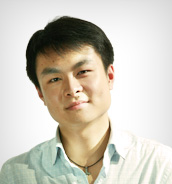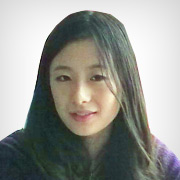内容预览:
大学英语四级新题型标准试题(一)
Part I Writing (30 minutes)
Directions: For this part, you are allowed 30 minutes to write a short essay on the topic of To Get
along with Your Roommates. You should write at least 120 words following the outline given
below.
1. 室友之间的冲突在校园里常有发生
2. 冲突的主要原因
3. 室友之间如何和睦相处
To Get along with Your Roommate
注意:此部分试题在答题卡 1 上。
Part II Reading Comprehension (Skimming and Scanning) (15 minutes)
Directions: In this part, you will have 15 minutes to go over the passage quickly and answer the
questions on Answer sheet 1.
注意:此部分试题在答题卡 1 上。
Part II Reading Comprehension (Skimming and Scanning) (15 minutes)
Directions: In this part, you will have 15 minutes to go over the passage quickly and answer the
questions on Answer sheet 1.
For questions 17,
mark
Y (for YES) if the statement agrees with the information given in the passage;
N (for NO) if the statement contradicts the information given in the passage;
NG (for NOT GIVEN) if the information is not given in the passage.
For questions 810,
complete the sentences with the information given in the passage.
Early Childhood Education
‘Education To Be More’ was published last August. It was the report of the New Zealand
Government’s Early Childhood Care and Education Working Group. The report argued for
enhanced equity (公平) of access and better funding for childcare and early childhood education
institutions. Unquestionably, that’s a real need; but since parents don’t normally send children to
preschools
until the age of three, are we missing out on the most important years of all?
A 13year
study of early childhood development at Harvard University has shown that, by the
age of three, most children have the potential to understand about 1000 words – most of the
language they will use in ordinary conversation for the rest of their lives.
Furthermore, research has shown that while every child is born with a natural curiosity, it can
be suppressed dramatically during the second and third years of life. Researchers claim that the
human personality is formed during the first two years of life, and during the first three years
children learn the basic skills they will use in all their later learning both at home and at school.
Once over the age of three, children continue to expand on existing knowledge of the world.
It is generally acknowledged that young people from poorer socioeconomic
backgrounds
tend to do less well in our education system. That’s observed not just in New Zealand, but also in
Australia, Britain and America. In an attempt to overcome that educational underachievement,
a
nationwide program called ‘Headstart’ was launched in the United States in 1965. A lot of money
was poured into it. It took children into preschool
institutions at the age of three and was
supposed to help the children of poorer families succeed in school.
Despite substantial funding, results have been disappointing. It is thought that there are two
explanations for this. First, the program began too late. Many children who entered it at the age of
three were already behind their peers in language and measurable intelligence. Second, the parents
were not involved. At the end of each day, ‘Headstart’ children returned to the same disadvantaged
home environment.
As a result of the growing research evidence of the importance of the first three years of a
child’s life and the disappointing results from ‘Headstart’, a pilot program was launched in
Missouri in the US that focused on parents as the child’s first teachers. The ‘Missouri’ program
was predicated on research showing that working with the family, rather than bypassing the
parents, is the most effective way of helping children get off to the best possible start in life. The
fouryear
pilot study included 380 families who were about to have their first child and who
represented a crosssection
of socioeconomic
status, age and family configurations (结构). They
included singleparent
and twoparent
families, families in which both parents worked, and
families with either the mother or father at home.
The program involved trained parent educators visiting the parents’ home and working with
the parent, or parents, and the child. Information on child development, and guidance on things to
look for and expect as the child grows were provided, plus guidance in fostering the child’s














